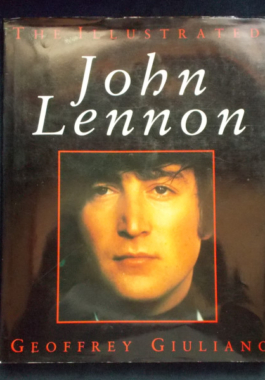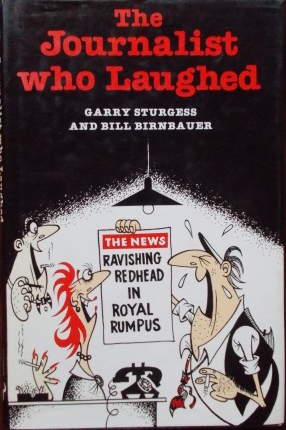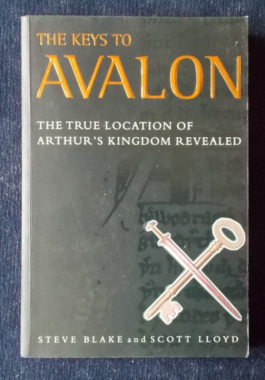-
 A lavish reference source for all things Native American, with spectacular colour photographs, artwork, depictions of artifacts and historical photographs. History, dress, lifestyle, spiritual beliefs and much more is covered. Illustrated.
A lavish reference source for all things Native American, with spectacular colour photographs, artwork, depictions of artifacts and historical photographs. History, dress, lifestyle, spiritual beliefs and much more is covered. Illustrated. -
 This history is a concise introduction to the great developments in aviation from its origins to modem times. The splendid and classic achievements of Sir George Cayley, Otto Lilienthal, the Wright brothers and the many other pioneers are engrossingly portrayed. The importance of the two world wars to the aviation story is recognized and a chapter is devoted to each. The reader is brought up to date with innovations such as the Soviet MiG-25 Foxbat, the Rockwell International B-1 bomber, the largest variable-geometry aircraft flying, and the Panavia Tornado and the F-16, the fighters of the 1980s. Lavishly illustrated with many historic photographs.
This history is a concise introduction to the great developments in aviation from its origins to modem times. The splendid and classic achievements of Sir George Cayley, Otto Lilienthal, the Wright brothers and the many other pioneers are engrossingly portrayed. The importance of the two world wars to the aviation story is recognized and a chapter is devoted to each. The reader is brought up to date with innovations such as the Soviet MiG-25 Foxbat, the Rockwell International B-1 bomber, the largest variable-geometry aircraft flying, and the Panavia Tornado and the F-16, the fighters of the 1980s. Lavishly illustrated with many historic photographs. -
 Noted celebrity biographer Giuliano and his literary partner Brenda take the reader beyond any of the two dozen plus books about the dreamy, bespectacled singer/composer from Liverpool. With text culled from over a decade of painstaking research in Lennon's extraordinary life, this insightful look at the former Beatle's life is rounded out with a treasury of sledo seen and some never-before published photographs spanning Lennon's entire life. There is also an introduction from Charlie Lennon, John's uncle, who reveals the often complicated inner world of his famous nephew.
Noted celebrity biographer Giuliano and his literary partner Brenda take the reader beyond any of the two dozen plus books about the dreamy, bespectacled singer/composer from Liverpool. With text culled from over a decade of painstaking research in Lennon's extraordinary life, this insightful look at the former Beatle's life is rounded out with a treasury of sledo seen and some never-before published photographs spanning Lennon's entire life. There is also an introduction from Charlie Lennon, John's uncle, who reveals the often complicated inner world of his famous nephew. -

Eight centuries of women's correspondence: from Eloise to Abelard, Elizabeth I to Erik of Sweden, Mary Wollstonecraft to Talleyrand; Jane Austen, George Sand, Louisa May Alcott, Virginia Woolf, Anais Nin and many others. All the topics of interest to women are covered and organised by subject matter, covering various topics from politics, work and war, childhood, love and sexual passion. This volume reveals the depth, breadth and diversity of women's lives through the ages. It provides an opportunity to read the real words of real women, in their own intimate language. A fascinating overview of eight hundred years demonstrating what has changed -and what has not.
-
 Having been a jockey since 1953, Roy Higgins knows most of the tall, and short, stories from the tracks. In a sport renowned for its colourful characters there a myriad of funny stories, from the lady trying to back the favourite, Quadrella, to the fast talking jockey who gets left at the barrier. But it is not only jockeys and racegoers who provide the laughter, owners trainers, bookmakers, racing writers and commentators, stewards, vets and committee men all figure prominently in many of the anecdotes. Anyone who has ever bet on a horse will enjoy this humorous and affectionate salute to the racing game by one of its best known identities. Illustrated by Vane Lindesay
Having been a jockey since 1953, Roy Higgins knows most of the tall, and short, stories from the tracks. In a sport renowned for its colourful characters there a myriad of funny stories, from the lady trying to back the favourite, Quadrella, to the fast talking jockey who gets left at the barrier. But it is not only jockeys and racegoers who provide the laughter, owners trainers, bookmakers, racing writers and commentators, stewards, vets and committee men all figure prominently in many of the anecdotes. Anyone who has ever bet on a horse will enjoy this humorous and affectionate salute to the racing game by one of its best known identities. Illustrated by Vane Lindesay -
 Journalists are an irreverent breed who must find humour in any event in order to stay sane. Here is a fabulously varied collection of stories from Frank and Kerry packer, Rupert Murdoch, Ita Buttrose, Ron Saw and many others on the world where truth is often stranger than fiction...When screen goddess Ava Gardner was in Melbourne for the filming of On The Beach (1959) a young reporter was told to get Miss Gardner's opinions of Melbourne, her latest romance, the film, etc. No interviews were being given by anyone and all the reporter could garner was a few scraps of information about the stars and the filming locations. So he concocted a story, the last paragraph being an alleged quote from Miss Gardner via a rumour at third hand from a usually reliable source: "On The Beach is a story about the end of the world and Melbourne sure is the right place to make it." The reporter fully expected that the editor would cut it, realising it was a practical joke. The 'quote' went viral world-wide and was included by by writers whenever mentioning Melbourne (or even Australia) for the next twenty years. In 1980 Miss Gardner was asked about the now-hackneyed quote. She said she couldn't remember saying it, but it was funny and she'd be happy to take the credit for it. The reporter - in 1982 - issued a formal confession and apology to Miss Gardner.
Journalists are an irreverent breed who must find humour in any event in order to stay sane. Here is a fabulously varied collection of stories from Frank and Kerry packer, Rupert Murdoch, Ita Buttrose, Ron Saw and many others on the world where truth is often stranger than fiction...When screen goddess Ava Gardner was in Melbourne for the filming of On The Beach (1959) a young reporter was told to get Miss Gardner's opinions of Melbourne, her latest romance, the film, etc. No interviews were being given by anyone and all the reporter could garner was a few scraps of information about the stars and the filming locations. So he concocted a story, the last paragraph being an alleged quote from Miss Gardner via a rumour at third hand from a usually reliable source: "On The Beach is a story about the end of the world and Melbourne sure is the right place to make it." The reporter fully expected that the editor would cut it, realising it was a practical joke. The 'quote' went viral world-wide and was included by by writers whenever mentioning Melbourne (or even Australia) for the next twenty years. In 1980 Miss Gardner was asked about the now-hackneyed quote. She said she couldn't remember saying it, but it was funny and she'd be happy to take the credit for it. The reporter - in 1982 - issued a formal confession and apology to Miss Gardner. -

This work offers the first viable setting for the Arthurian legacy, tracing the legend back to its roots in ancient Welsh scriptures and the history of the land. Avalon is Britain's very own Atlantis - a mystical kingdom rich in myth and lore. Legends tell how the body of King Arthur was taken to Avalon, where he would wait till his nation's hour of need. The truth is that Avalon was a very real place with a turbulent history of its own. The authors of this study use neglected ancient sources, geographical clues and modern maps to take us to the heart of this realm. They uncover a remarkable landscape steeped in evidence of a bygone age. En route, they debunk the claims of other places to the name of Avalon, and literally redraw the map of Dark Age Britain, forcing us to re-examine all of our theories about this era. Ultimately, they reveal the kernel of historical truth at the heart of the Arthurian legend and unlock the borders of the lost land in which the identity of a nation has been buried - until now. Illustrated with colour and black and white photographs.
-
 Mielche, a Dane, travelled 17,000 miles across the face of Australia in order to write this book. He saw the big cities, noted the architecture, the culture and characteristics of human nature. He visited the remote outback communities, flew with the Flying Doctor and participated in a 'School Of The Air' broadcast. In all, he saw a brash, go-ahead nation that paid rich rewards to those who were prepared to work for them and a people that had an easy tolerance of race, colour and religion. Written in 1961, it give a window on the world of the Australia that was. With colour photographs.
Mielche, a Dane, travelled 17,000 miles across the face of Australia in order to write this book. He saw the big cities, noted the architecture, the culture and characteristics of human nature. He visited the remote outback communities, flew with the Flying Doctor and participated in a 'School Of The Air' broadcast. In all, he saw a brash, go-ahead nation that paid rich rewards to those who were prepared to work for them and a people that had an easy tolerance of race, colour and religion. Written in 1961, it give a window on the world of the Australia that was. With colour photographs. -

 Australian Richard Hillary joined RAF Fighter Command’s 603 Squadron in July 1940, then based in Scotland and flying the new Supermarine Spitfire. On 27 August 1940 the squadron moved south to London, the epicentre of the Battle of Britain, and within a week Hillary had shot down five Messerschmitt 109s, becoming an ‘ace’. But on his last sortie he was shot out of the sky over Dungeness, the cockpit of his Spitfire became engulfed in flames and Hillary was grievously burned as he desperately tried to bale out. Hillary was soon to become the most famous patient of the RAF’s pioneering plastic surgeon, Archibald McIndoe, and member of his ‘Guinea Pig Club’. He would endure months of painful surgery in an attempt to repair the damage to his hands and face, and allow him to return to active duty. Originally published in 1942, just months before he died in a second crash, The Last Enemy recounts the struggles and successes of a young man in the Royal Air Force.
Australian Richard Hillary joined RAF Fighter Command’s 603 Squadron in July 1940, then based in Scotland and flying the new Supermarine Spitfire. On 27 August 1940 the squadron moved south to London, the epicentre of the Battle of Britain, and within a week Hillary had shot down five Messerschmitt 109s, becoming an ‘ace’. But on his last sortie he was shot out of the sky over Dungeness, the cockpit of his Spitfire became engulfed in flames and Hillary was grievously burned as he desperately tried to bale out. Hillary was soon to become the most famous patient of the RAF’s pioneering plastic surgeon, Archibald McIndoe, and member of his ‘Guinea Pig Club’. He would endure months of painful surgery in an attempt to repair the damage to his hands and face, and allow him to return to active duty. Originally published in 1942, just months before he died in a second crash, The Last Enemy recounts the struggles and successes of a young man in the Royal Air Force.



